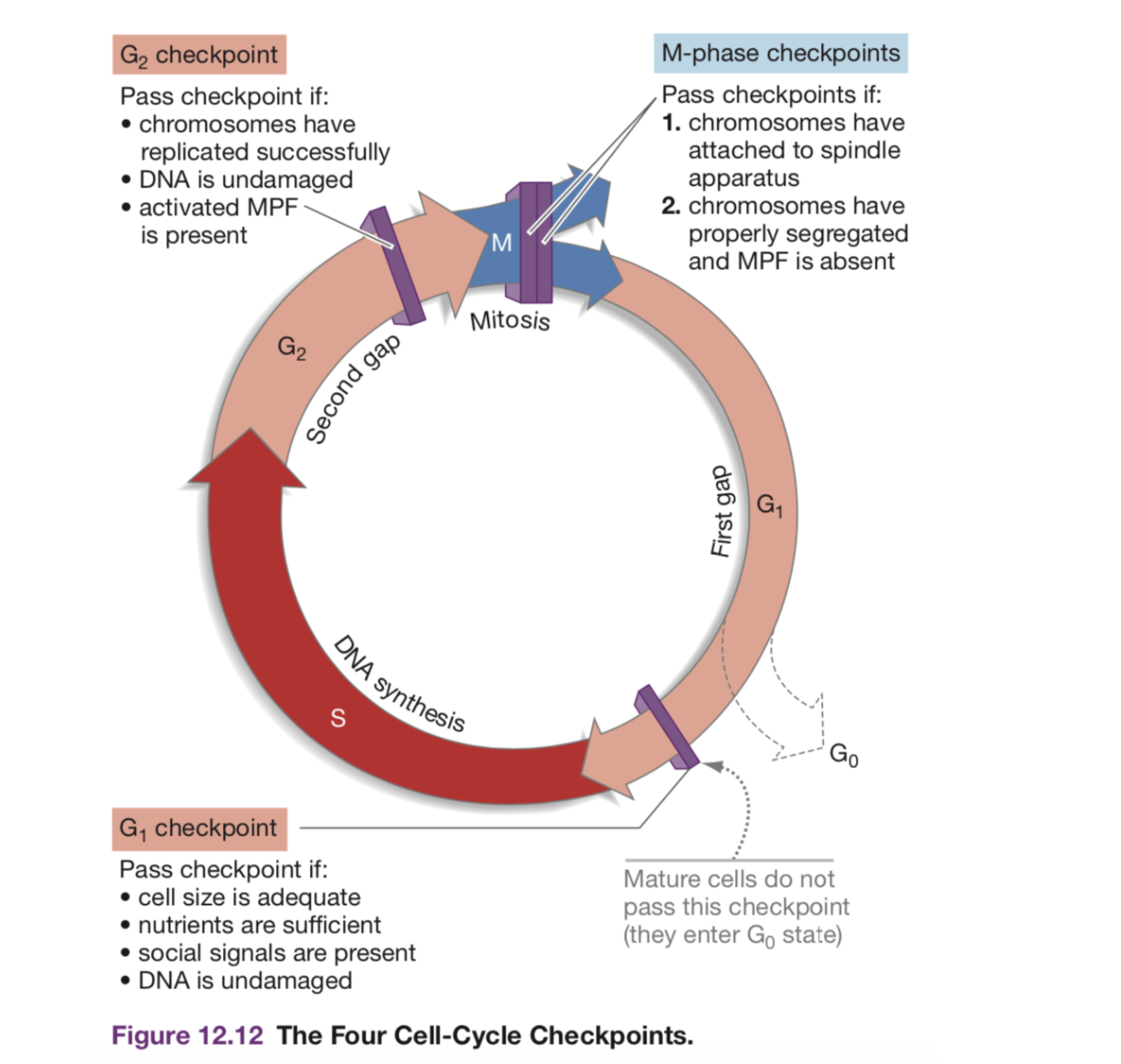1 The Cell Cycle
The cell cycle is roughly three parts which is really 5 parts which is really 9 parts.
The three main parts are:
- Interphase — G1, S, G2: systems preperation for mitosis
- Mitosis — Separation of the duplicated chromosomes
- Cytokinesis — the splitting of the cell itself. Really part of mitosis
1.1 Features of the Cell Cycle
Most cell division results in genetically identical daughter cell
Each cell, once specialised, chooses what parts of their chromasome to unwrap + permanently wrap.
Difference in transcription results in different phenotypes.
Sperm + Egg (imcomplete cells) combine together to form a "zygote" => a single cell. Each person is from a zygote.

Figure 1: Screen Shot 2020-11-09 at 3.16.12 PM.png
1.2 The Phrases
1.2.1 G1 => Rest Phase, Gap 1
This is the phase which is the "daily life of a cell". There are two major checkpoints in this phase which, upon it is reached, sets the rest of the cell cycle into motion.
- May hit s.a. to volume checkpoint => if ratio too big, the cell is too big
- May hit diffusion checkpoint => larger cells would need to work harder to transport things to the centre
At this phase, the organelles in the cytoplasm also replicates in preparation for the S phase.
1.2.2 S => S Phase, duplicate DNA. 150 mins
In this process, all of the DNA that is in the nucleus will be KBhBIO101DNAReplicationed in order to actually split the cell in half.
1.2.3 G2 => Rest Phrase, Gap 2.
The pairs of DNA begins bundling and condensing; the DNA is also checked upon and verified for consistency and dumped based the needs of the cell.
At this point, the enzymes needed to assist Mitosis is also synthesized.
1.2.4 M => Mitosis!
Mitosis is the process by which non-sex (somatic) cells actually divide. It consists of four parts — prophase, metaphase, anaphase, telophase — and a final seperation called cytokenisis. See KBhBIO101Mitosis.
or…
1.2.5 M => Meiosis!
Mitosis is the process by which sex cells (gametes) divide. It consists of four parts — prophase, metaphase, anaphase, telophase — and cytokinesis but TWICE! This process also has clever mechanisms to ensure genetic diversity. See yourself: KBhBIO101Meiosis
1.3 Cell cycle regulation
Purpose of regulation: Cells must meet certain conditions before moving onto the next phase.
Cell regulators are proteins that manage and sheperard the process of cell division. They respond to molecular signals throughout the cell and check for internal signals like DNA damage to control the rate and progress of cell division.